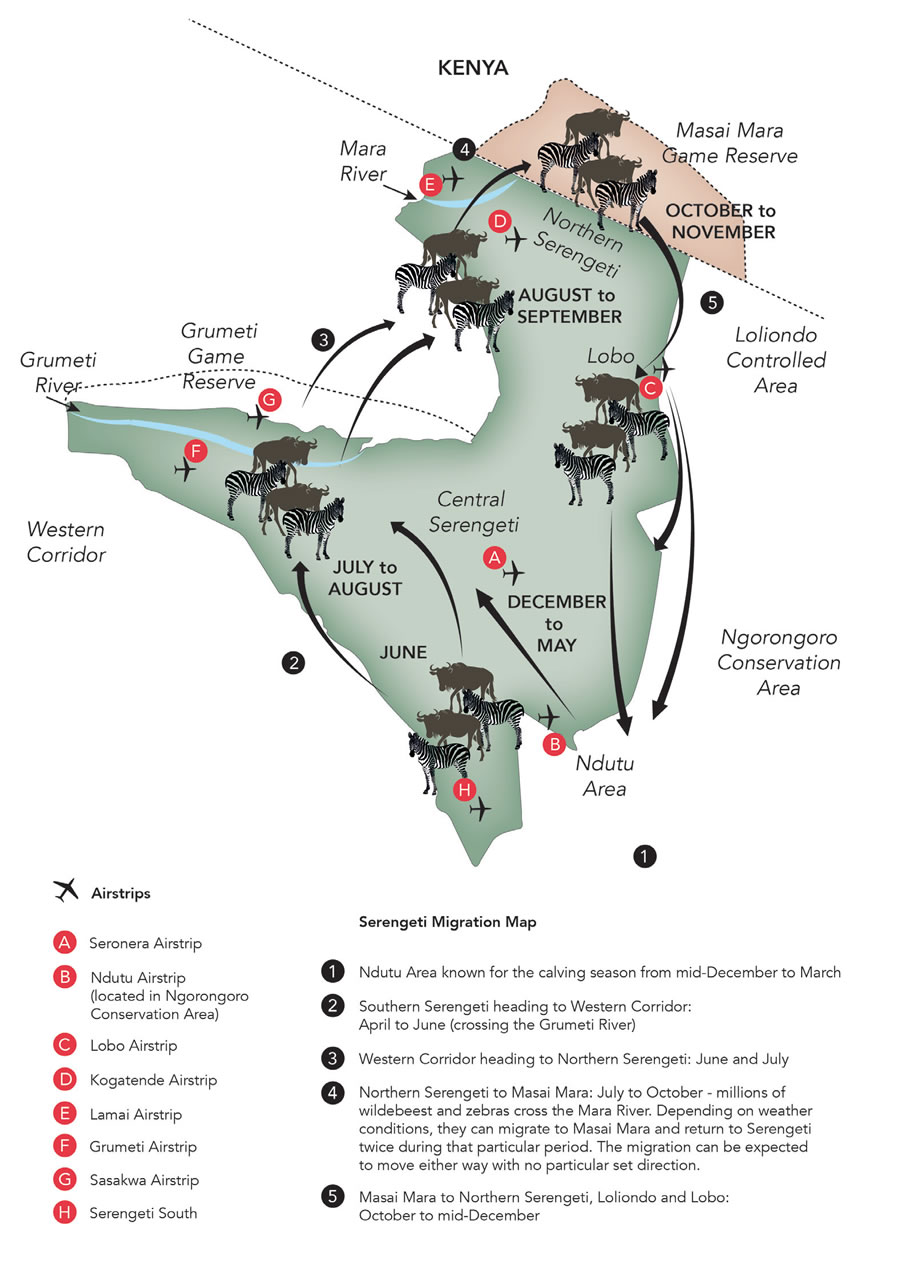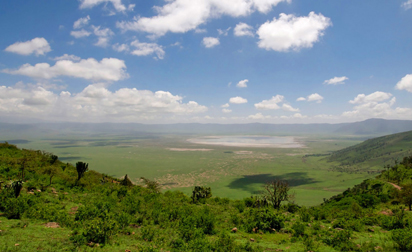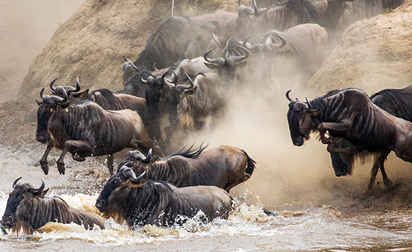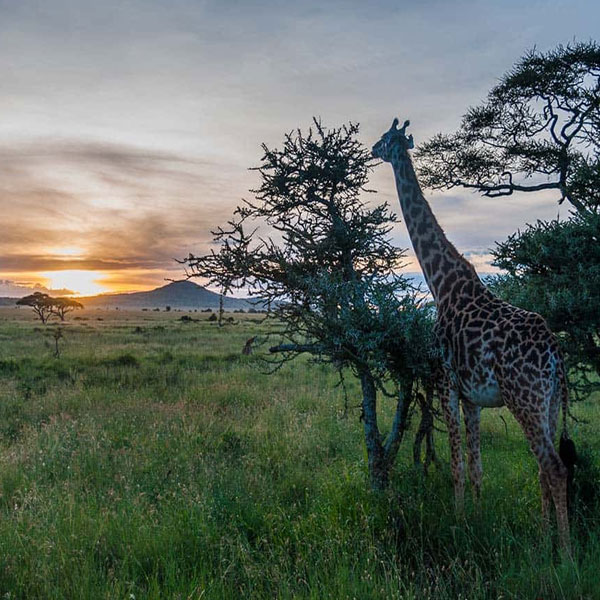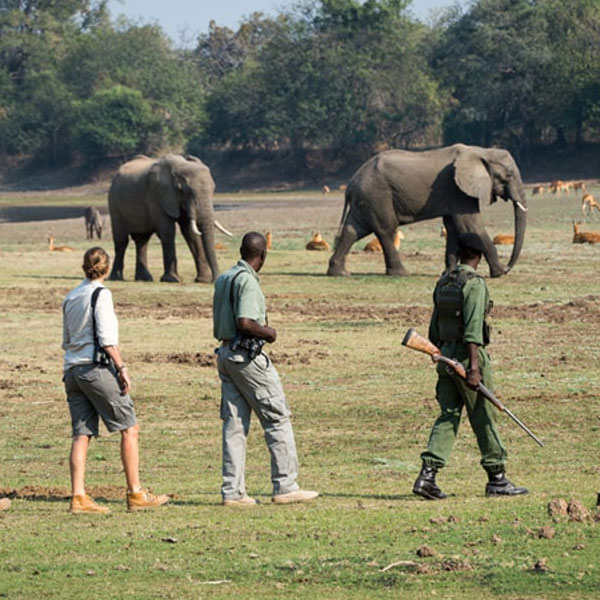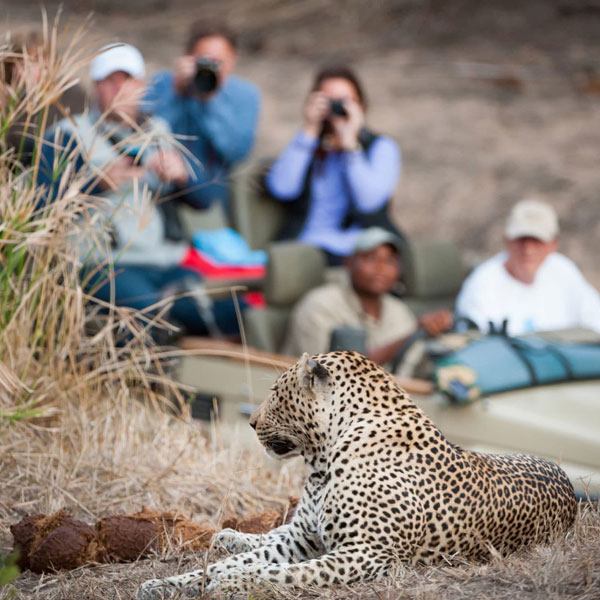Quick contact info
Where Find Us
ACU Building, 2nd Floor Room NO 207, Sokoine Road, P.O BOX 1932, Arusha, Tanzania
Great Wildebeest Migration
The Africa's Great Wildbeests Migration
The Great Wildebeest Migration - the annual migration of giant herds of grazers across Northern Tanzania like on Serengeti is a truly spectacular event. Over two million wildebeest, zebras and gazelles move through the Serengeti ecosystems in search of green pasture, in a regular pattern. This is surely one of the greatest wonders of the natural world and most unique Tanzania Safari Tours experience!
GREAT WILDEBEEST MIGRATION OVERVIEW:
- Jan-Mar: Southern Plains; Calving
- April - May: Long Rains; Herds Start To Track North Towards Central Zones
- June-July: Herds Stretch Out Through Central Seronera And Grumeti Western Corridor
- August-September: Vast Herds In Northern Serengeti Into The Masai Mara; Dramatic River Crossings
- September - October: Lead Herds Start To Turn South Again
- November: Short Rains - All Herds Moving South
- December: Herds Start Arriving In Southern Serengeti
WHERE DOES THE GREAT WILDEBEEST MIGRATION TAKE PLACE?
The Best Place To See Wildebeest Migration is sometimes thought of as a circuit that occurs between Tanzania's Serengeti plains in the south and Kenya's Maasai Mara in the north between May and December each year. But don’t let orderly maps that predict their pathways fool you. The Great Migration Serengeti is a natural process that depends on weather, environmental factors, and the animals themselves, the timing and route that’s well-known – from the southern Serengeti through the Western Corridor up to the Massai Mara then back to the start through the Loliondo and Lobo area – is more of an estimation than a reliable roadmap.
WHEN IS THE BEST TIME TO EXPERIENCE THE GREAT MIGRATION?
Serengeti Wildebeest Migration dates tend to remain the same throughout the years. The first animals usually start to set out across the Serengeti in search of greener grass and dependable water supplies in April. Over the following months, they’ll encounter countless obstacles – from predators to river crossings – on their enormous trek. Here's a breakdown of their provisional travel schedule to choose Best Time To Visit Tanzania, so you can plan your own.
The Migration in Tanzania
December - March
At this time of year, the herds congregate in the Serengeti and Ngorongoro areas of northern Tanzania, which are made lush by the annual rains. This is calving season, and an excellent time for viewing newborn babies; while big cat sightings (and kills) are common. The southern Ndutu and Salei plains are best for spotting large herds during this time of year.
April - May
The herds start to migrate west and north to the grassier plains of the Serengeti’s Western Corridor. Seasonal rains make it difficult to follow the herds during this stage of their migration. In fact, many of Tanzania's smaller camps shut down due to impassable roads.
June
As the rains stop, wildebeest and zebra gradually move north and individual groups begin to form much larger herds. This is also mating season for the migrating wildebeest. The Western Serengeti is the best place to watch this stage of the migration unfold.
July
The herds reach their first big obstacle, the Grumeti River. The Grumeti can get deep in places, especially if the rains have been good. The depth of the river makes drowning a distinct possibility for many wildebeest and there are plenty of crocodiles to take advantage of their distress.
The Migration in Kenya
August
The grasses of the western Serengeti are turning yellow and the herds continue north. After crossing the Grumeti River in Tanzania, the wildebeest and zebra head to Kenya's Lamai Wedge and the Mara Triangle. Before they get to the lush plains of the Mara, they have to make another river crossing. This time it's the Mara River, and that too is filled with hungry crocodiles.
September - November
The Mara plains are filled to the brim with large herds, naturally followed by predators. The best place to stay while the migration is in the Mara is Governors' Camp.
November - December
The rains start in the south again and the herds begin their long trek back down to Tanzania to give birth to their young. During the short rains of November, the wildebeest migration is best viewed from Klein’s Camp.
The greatest wildlife show on earth awaits
Ready to plan your front-row seat to the greatest wildlife show on earth? Get in touch with one of our Travel Experts today.
You can also use our tour builder to customise your Great Migration tour, which has been picked as one of our top 4 tours to experience in 2020.
FUN FACTS ABOUT THE GREAT WILDEBEEST MIGRATION
- The Great Migration Serengeti is the largest overland migration in the world.
- Whilst the straight-line distance of annual migration is around 600 km, researchers have found that individual animals cover almost 2,000 km each year, at distances of up to 40 km in a single day.
- In calving season (Jan-Mar) around half a million wildebeest are born each year in the Serengeti. These wildebeest calves are able to run within two minutes of being born.
- The wildebeest herds have no leaders, rather they have an instinctive, herd mentality. This means they don’t all stick together all the time, but often form splinter groups that move in different directions in search of the best grazing.
- The wildebeest and zebras have a symbiotic relationship, in that wildebeest only feed on the shorter parts of the grass, once the grazing zebras have acted as lawnmowers, cropping the grass down and making it to the wildebeest’s liking.
- The herds consume an estimated 4,000 metric tons of grass each day.
- There is a lion population of over 3,000 in the Serengeti ecosystem that follow the herds around the reserve.
- The crocodiles found in the Mara River can lunge out of the water by more than half of their own body length to catch a wildebeest in their jaws.
- An estimated 250,000 wildebeest die each year through a combination of predation, drowning, thirst, hunger, and exhaustion.
THE GREATEST WILDLIFE SHOW ON EARTH AWAITS
Ready to plan your front-row seat to the greatest wildlife show on earth, Great Wildebeest Migration? Get in touch with one of our Travel Experts of Riverstone Safaris today on your Tanzania Safari Tours. You can also use our tour builder to customise your Great Migration Serengeti, which has been picked as one of our top 4 tours to experience in 2020-2021.
Want To Know More?
You can still come any time of the year to enjoy the unique culture & adventure in Tanzania and many other activities. You will not regret your trip. Read our Tanzania Travel Guide and learn more about cost, travel advice, packing lists, faq’s and all other interesting thing you have to know!
Great Migration
Tanzania Travel Guides
Let Us Help Your Dream
Tell us about yourself. Once we learn more about you, we will recommend some travel ideas.


